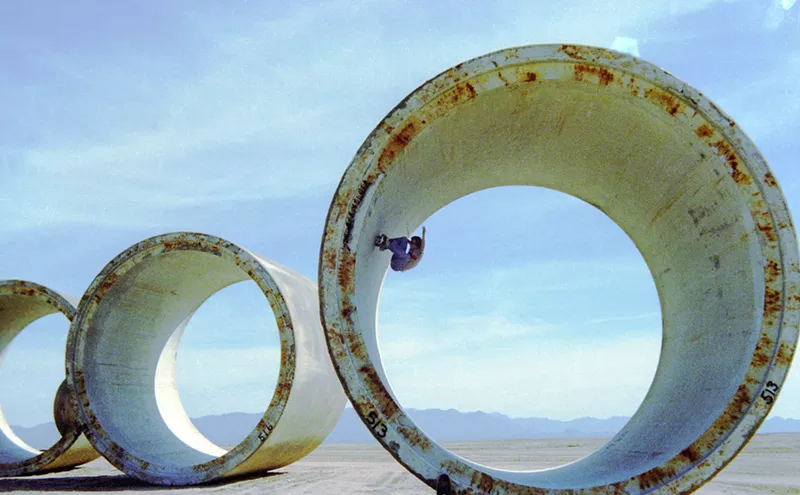It must have been intimidating. Less than six weeks on the job and Sean Malone, CEO of the Frank Lloyd Wright Foundation, had to announce that he was installing solar panels at Taliesin West, making it one of the first structures in the National Register of Historic Places and on the National Historic Landmarks list to "go renewable."
Malone, modestly, shakes it off.
"To be able to be a visible example of environmental stewardship -- there aren't many historical landmarks that could do this," he says. "We can, and it's because of Frank Lloyd Wright's history of innovation and responsible use of resources."
Read all about the Frank Lloyd Wright exhibition at Phoenix Art Museum in this week's art review by New Times' Kathleen Vanesian. Find more about the push for energy at Taliesin West after the jump...
The project broke ground earlier this week, but planning began in early 2011, before Malone came on board, when the foundation hired Phoenix energy auditing company Big Green Zero to find ways to lower Taliesin West's $200,000 annual energy bill.
The audit found that with a few energy-efficiency renovations (like replacing light bulbs and updating thermostats), Taliesin West could cut its bill in half. And with some renewable energy additions (solar panels), the complex could someday become net-zero.
"After the assessment, we realized that we're not just reducing a bill, but taking this remarkably historic laboratory and bringing 21st century technology into it," says Bob Roth, CEO of Big Green Zero.
Of course, at a 75-year-old school and studio, that's easier said than done.
There are at least 5,000 light bulbs at Taliesin West, Roth says, many of which were specially placed and designed to provide architectural illusions. To replace them with more energy-efficient bulbs, Roth's team had to work with Scottsdale's Studio Lux to come up with entirely new designs.
"It's a very unusual property, tremendously difficult to deal with," Roth says. "Take the canvas roof that Wright' experimented with. Today, it's an impossible situation. You can't air condition those spaces with no insulating value."
Thanks to Wright's omnipresent impact on the Valley Taliesin West has garnered generous donations for the project from local businesses, including First Solar, a Tempe company that donated nearly two acres of solar panels at a value of more than $1 million.
Though the panels will be installed by the end of April, it could take up to six years to finish the entire retrofitting project, Roth says, depending on whether and when more donations roll in. (It will take two to four years just to replace the light bulbs.)
Like with any historical renovation, there was concern from the beginning about preserving the integrity of Taliesin West. Roth says he and the foundation worked tirelessly to ensure the complex would appear untouched. But how can you hide 1.9 acres of solar panels?
Cleverly, Malone says.
From any point of Taliesin West's "historic core," the solar panels won't be visible. They'll be pushed off to the side and surrounded by desert plants . The only time visitors will see them is when they're driving up to the complex -- that was intentional.
"From any of the historic viewsheds, visitors won't be able to see the solar panels even if they try," Malone says. "Unless they happen to bring 100-foot stilts with them."
And so far, there hasn't been much criticism from the design or historical communities. Roth says he's encountered at least 100 Wright architecture students since the project began, and that two or three total expressed concerns about the renovations.
Those familiar with Wright's work can recognize that energy conservation is in line with the designer's vision, says Mark Vinson, design and preservation manager for the City of Tempe and architecture faculty associate at The Design School at ASU.
"While I would be opposed to such an installation at the iconic Fallingwater, another Wright-designed National Historic Landmark, I see the Taliesin case in a somewhat different light," says Vinson, who has no affiliation with the project. "This was Wright's own winter home, architectural school and studio and, as such, served as a 'living laboratory' for ideas, methods and materials and was never intended to be frozen in time."
,











